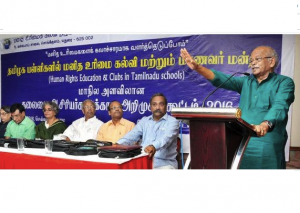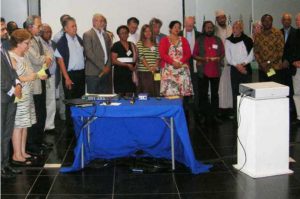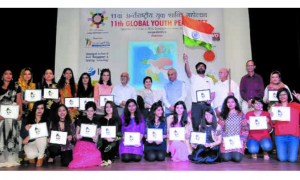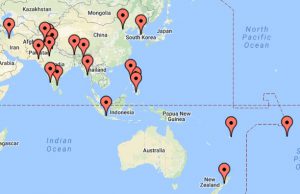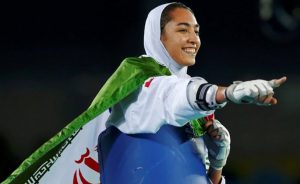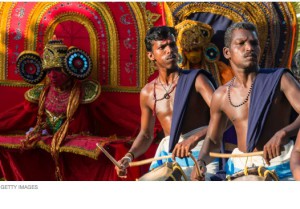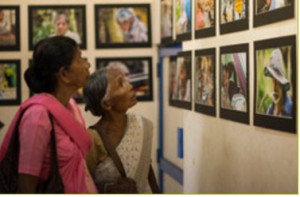. . WOMEN’S EQUALITY . .
An article by Anne M Pearson published in December 2016 Newsletter of Women’s Peace Brigade International (Mahila Shanti Sena)
From October 2 to October 13 2016, I had the privilege of participating in a gathering of 41 women from 24 countries, along with over 150 Indian women at the impressive location of the recently built Gandhi Peace Research Centre in the Jain Hills, near Jalgaon, Maharashtra. We were invited by the organization Ekta Parishad, a Gandhian-inspired NGO who have worked with India’s landless and poorest of the poor for almost three decades. Toronto-raised but long-standing Indian resident and Hindi-speaking Jill Carr-Harris was the chief organizer who welcomed us and set the theme for the meeting.

(Click on photo to enlarge)
It was an extraordinary opportunity to meet and learn from women of diverse ages, education and cultural backgrounds, each dedicated to promoting peace and social justice in her own home country. At the gathering, fifty “peace champions” from localities throughout India were honoured for their courageous and tireless work for their communities. Key questions addressed throughout the four days of plenary sessions and workshops were: How do women cope with the deep injustices and violence they encounter in their everyday lives? And, what nonviolent strategies have worked to address those injustices?
There was a remarkable consistency in the stories we heard from such disparate countries as Nigeria, Kenya, Brazil, Kampuchea, Philippines, and Nepal and of course India. But even from the so-called “North”, women from Spain, Sweden, the US, Canada, Germany, and Azerbaijan confirmed the prevalence of (systemic and reactionary) violence, mistrust, and fear being allowed to flourish through forces of division and disintegration. At the same time, we also heard positive stories, from all the women, of the forces of integration and community building, and specific forms of nonviolent activism that is taking place. Thus, what we heard and learned evoked both feelings of deep sadness and outrage on the one hand, and admiration and hope on the other.
Following the Jalgaon meeting, most of the international women and a group of Indian women and men, pre-divided into five subgroups, left Maharashtra by train and went to different areas of Madhya Pradesh to begin four days of visits to Dalit and Adivasi villages whose populace had been working with Ekta Parishad. My group went to Gwalior to begin with, and after an overnight stay and meetings with journalists, Gandhian activists and academics, we proceeded to visit villages in the Chambal and Shivpuri Districts. While this short article cannot begin to capture all that I learned, I share a few highlights, including these facts: 50 million people in India have no land title and can be evicted at any time for any reason; there are many “pro-poor” policies and pieces of legislation in India, but they don’t tend to be implemented—not without sustained pressure from the people. “Pro-rich” policies are implemented.
(Article continued in the right column)
Do women have a special role to play in the peace movement?
(Article continued from the left column)
In each village we met with women (who warmly greeted us with hand-made malas), and heard their concerns, challenges and successes in overcoming barriers. All of the villages were composed of Sahariya Adivasis, considered by many Indians, we were told, as the “lowest of the low”. In Chambal district the main problems identified were conflicts with the National Forestry Department over land use, food and water security, conflict over resources, and violence against women, including the kidnapping of girls (for ransom or sometimes as wives for boys, due to big gender gap in this region).
In India, we were told, women are not recognized as farmers; men are farmers because they are the recognized “owners” of the land, even while women work the land at least as much as men do. This practice is starting to change as land is being registered in both the names of the wife and the husband as villagers begin to receive, after years of agitation, their certificates of land ownership.
In one village, we heard that 15-20 years ago the villagers collected firewood from the forest and took it to Gwalior to sell. Prior to 30 years ago families had occupied the “forest land”. They had cleared some of the land of shrubs to plant seasonal food crops, but forestry officials would come and destroy their crops or otherwise harass them, for example, by spreading seeds of the large thorn bushes called “bulbul’ (the removal of which was dangerous). Then, some 20 years ago, they met Ekta Parishad workers and were inspired to form a grameen bank to pool their resources and they filed claims for rights to forest land. Three or four times their claims were rejected at the sub-divisional and district levels. Villages were united and had the funds for collective action—to engage in marches and regular follow-up with the officials. They filed claims for 72 families; now 35 have received certificates of land ownership for a total of 132 acres of land. Nowthey can grow enough food to feed their families.
Lee McKenna, from Toronto, who was in another group, shared a description from talking with a woman leader in the village of Tulgat (Budelkhand district): The villagers had been having conflict with Forest Department and the women were fed up and gathered in a large group in front of the Forest Department office. The police came. They asked the women: Who is your leader? They replied: “We are
500 leaders. Bring 50 trucks and be ready to take us all, including the mice of the fields!” The police asked the women: “Who gave you permission (to gather like this)?” They replied: “We took the permission of our hunger!” The police tried to take the men away, loading them up in trucks from the back. The women yanked the men out from the front. “We made chapatis and brought them to the men.” The police said “these women are so troublesome!”
Clearly, women (and social-justice-seeking men) need to be “troublesome” if we are
to advance towards a culture of peace that so many of us yearn for. Gandhi’s voice was ever in the background of our conversations: “Nonviolence must express itself through the acts of selfless service of the masses”, and “If nonviolence is the law of our being, the future is with women.”
Plans are underway for future gatherings of international women in 2017 and beyond.
